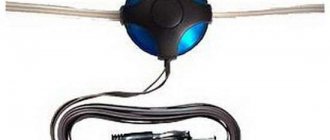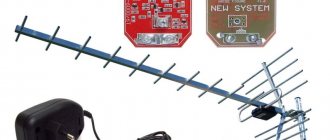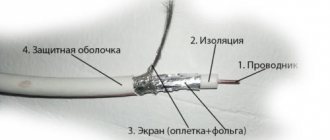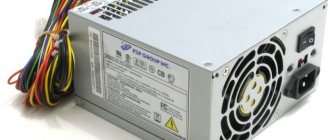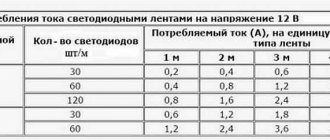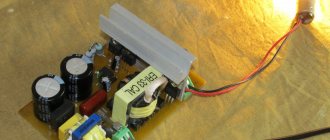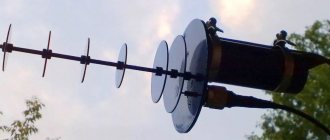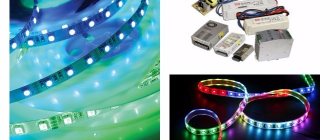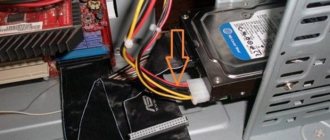The power supplies that accompany television antennas with amplifiers are manufactured at a minimum cost and with the same reliability. Since they usually operate around the clock, they often overheat and fail, even at rated AC voltage.
As mentioned above, power supplies for antennas are manufactured at a minimum cost, providing a current consumption of 20 mA at a voltage of 12 volts. However, they maintain good voltage regulation due to the use of a 12-volt stabilizer in the circuit.
A detailed antenna amplifier comparison, including finding the right antenna amplifier for your needs. When choosing the right antenna boosters for your needs, make sure we have never personally reviewed the products, but compared them against product data. All products on the site are intensively researched. Our test reports, test results, and advantages as well as disadvantages are the cumulative result of previous product tests on the Internet. Our team summarizes all the knowledge gained, as well as experience in operation, functions and optics.
What is an antenna amplifier?
All published factual tests are the result of an objective examination of existing data and thus without personal judgment. Amplifier for connecting to the home for cable television. According to the survey, 97 percent TV is people's favorite leisure activity, followed by listening to the radio at 90 percent. This means that TV reception is limited, for example, by picture noise or so-called blocking during digital reception.
Let's look at the antenna amplifier power supply circuit.
Standard antenna amplifier power supply circuit
From the diagram it can be seen that the antenna amplifier power supply consists of: a transformer with built-in fuse T1, a rectifier VD1-VD4, a low-frequency filter C5 and a high-frequency filter C6, a voltage stabilizer DA1, and a 12 V voltage indicator HL1. This circuit is an unregulated power supply for an antenna amplifier.
Even today, many households use satellite dishes to receive a wide variety of television programs. However, certain regions may experience disruptions such as bad weather conditions such as heavy snow, heavy rain or storms.
And in order to counteract these bad weather conditions or strengthen the signal that is received at home, an antenna booster is used. An antenna amplifier is an amplifier that still amplifies the high frequency signal received from the antenna to a low noise level so that the output signal is stronger than what was originally received. Antenna amplifiers are also called broadband RF amplifiers when used to increase signal strength.
It is possible to adjust the signal level using an adjustable power supply for the antenna amplifier. The circuit is almost similar to the unregulated one, with one addition to the voltage stabilizer circuit at pin 2, a variable resistor is inserted into the gap, with which you can change the supply voltage of the amplifier.
To simultaneously improve TV and radio signals using an antenna booster, it is recommended to use an antenna booster with two connections on the receiving end. If you want to boost your antenna's reception, you must ensure that the coaxial cable you use is of high quality. Signals are often lost even if the coaxial cable is shielded too low, even if the antenna amplifier is used correctly. To amplify the antenna amplifier for television signals, the incoming digital signal must not be too low.
The above circuit consumes excessive current from the network. If you modify it, you can end up with a more economical power supply with improved characteristics. Here is a diagram of an economical power supply for an antenna amplifier:
What do you do with the antenna amplifier?
An antenna amplifier can slightly increase the received input signal and provide an image without interference from light receivers.
The purpose of an antenna amplifier is to improve weakened signals that may occur, such as antenna cable losses, and to enhance the receiving antenna's input signal.
Antenna amplifiers are often mounted near antenna systems. These are high frequency amplifiers that cover several frequency ranges. The amplifier increases the power level and therefore the signal such that the output signal of the amplifier is greater than the original input signal.
Resistors R1, R2 reduce the power supply's own consumption, the operating voltage of the problematic capacitor C5 has been increased, and additional filters L1C7 and L2L3C8 have been added.
There is nothing difficult about making a power supply for an antenna amplifier with your own hands. It should be remembered that a homemade antenna power supply must have low consumption and good stabilization, otherwise interference in the form of snow, slanting stripes and wide black stripes will appear on the screen.
What should you consider when purchasing an antenna amplifier?
Especially in regions with poor reception, you should consider purchasing an antenna amplifier.
If, however, the signal is too weak to begin with, an antenna booster can also do little. When using an antenna amplifier, it is important to note that the outputs to which no device is connected are equipped with a 75 ohm termination resistor. In addition, the radio receiver is then limited and there is a loss in reception quality. The following table provides an overview of purchasing an antenna amplifier. Therefore, it should be noted that when purchasing an antenna amplifier, you need to consider the gain level and gain ranges. Gain is expressed in decibels and ranges from 15 dB to 50 dB for most devices. This depends on the antenna output power. In the private sector, a gain of between 10 dB and 30 dB is sufficient.
Connection
To connect the cable to the power supply for the antenna amplifier, you need to connect the antenna cable to the plug. The first step is to prepare the cable. We retreat one and a half centimeters from the edge of the cable and make a thin circular cut,
How to make your own adapter to supply power to an antenna amplifier
When purchasing an antenna amplifier, it must also be compatible with the receiver as well as the antenna. Impedance, operating voltage and consumption values are taken into account. The necessary adapters and cables are usually supplied. Please note, however, that the antenna booster is not a miracle. If a very weak input signal is present, this may not always be sufficiently amplified by the antenna amplifier.
How does an antenna booster work?
Most devices in this fact with an antenna amplifier have a built-in power supply. The antenna signal booster is placed directly into the socket so that the antenna booster can be supplied with power. In-wall or on-wall amplifiers typically have a power cable that must be routed to the next power source.
Be careful not to damage the fine hairs of the screen under the outer layer of insulation. Remove the cut piece of insulator. Gently and evenly bend the hairs of the screen, it is better to remove the strip of foil. Stepping back 5 mm from the folded edge of the braid, make another circular cut of the inner insulator and remove it. Insert the cable under the fasteners and tighten the screws.
The socket and antenna amplifier must be located near the antenna. If the antenna amplifier needs to enhance digital television, when connecting the antenna amplifier, you should select the socket near the cable socket. The coaxial cable is simply connected to the coaxial cable between the TV and the cable outlet.
What types of antenna amplifiers are available and what are the characteristics of these antennas?
How to connect an antenna amplifier. If there is no jack near the room antenna, an extended antenna cable is required. The following table provides an overview of the different antenna amplifier options. Since antenna amplifiers are usually used constantly, it pays to pay attention to the quality and processing of the amplifier, and this of course affects the price. Therefore, it is better to look for a suitable antenna amplifier in the mid-to-high price segment, which mainly covers its own needs. To do this, it is important to consider in advance how many devices you would like to connect to the antenna booster, just to give an example.
What manufacturers are available for antenna amplifiers
Advantages and disadvantages of antenna amplifiers. Easy installation, no previous knowledge required during assembly required for long cable lengths as the distributor can be used better for TV reception better than radio. There is no guarantee of better reception, the input signal is too weak, the antenna amplifier cannot perform miracles.
- What should you spend on a good antenna amplifier in the purchasing department?
- However, sometimes there are special offers that are cheaper.
As mentioned, the survey results in TV being people's favorite leisure activity at 97 percent, followed by listening to radio at 90 percent.
Please note that the metal braid must touch the bottom tinned area, otherwise power may not be supplied to the antenna. Do not allow the braid of the central core to touch, there will be a short circuit and the 12 V indicator light will not light up.
Much help for this problem is provided by so-called antenna amplifiers. They can be of great help when reception is poor, regardless of the signal. When purchasing an antenna amplifier, you need to pay attention to the good processing and quality of the product, because antenna amplifiers have many years of experience. Therefore, you should look around the mid-price segment for a suitable antenna amplifier. Among the products presented above, the most suitable product should be found for each need.
When purchasing an antenna amplifier, you should consider some points, signal strength, number of possible antenna connections and power consumption. For an antenna amplifier to work well, it must be attached directly to the antenna. Antenna amplifiers are so-called high-frequency amplifiers. They can enhance the power level of the incoming signal. This way, the signal output power becomes greater than the input power, and the images on the TV will be clearer and there will be less interference.
If the power supply for the antenna amplifier is correctly connected to the cable, as well as the cable to the antenna amplifier, then the TV will start showing immediately after setup.
Remaking the antenna to receive digital broadcasting
Modern television signal receivers (TVs) from their owners require a higher quality signal than analog television; a TV antenna is needed that can pick up a DVB - T2 signal. The market is saturated with many fakes that pass off as digital TV signal receivers, for this reason experts recommend considering something like an antenna for digital television made from an existing analog antenna.
Modified analog antenna for digital
There are options when a DIY antenna for digital TV is obtained from a common “Polish” antenna. An important condition for such a conversion is that your TV has DVB-T2 support, but even in this case, you can buy a set-top box, which is cheaper than a new TV. With the presence of a television receiver and an adapter for T2, the cost of alteration will be minimal.
Do-it-yourself antenna and the necessary parameters that must be met before starting work are the location of the tower from your place of residence: the further it is, the less likely it is to receive digital broadcasting. In the version with a “Polish” antenna, the distance from the tower should not be further than 25 kilometers. What is needed for work:
- Make sure that the antenna wire is in working condition or replace it along the entire length with an RG6 cable;
- You need to buy an LSS-940 plateau and a male plug, an F connector adapter for the cable that you have;
- Prepare tools: knife, screwdriver. For these purposes, you should not spend money on a special insulation stripping tool or other electrical tools.
We carry out the work according to the following method:
- in the apartment, disconnect the power supply from the TV signal receiver;
- at the signal receiver and its subsequent amplification on the street, remove the SWA amplifier board;
- instead of the SWA amplifier we install the LSS 940 board;
- the power supply unit will no longer be needed in operation, since the matching plate installed on the antenna does not have transistor amplification stages;
- in the apartment we screw the adapter F connector onto the antenna wire, first you need to cut the cable correctly with a 100% guarantee of the integrity of the main core and full contact of the screen with the outer part of the connector;
- We put the “male” plug on the connector;
- if you have a set-top box, plug the plug into it; if it is a supported built-in adapter, plug the plug into the TV;
- using automatic tuning of television channels, we find multiplex first and second;
- As a result, 20 digital broadcast channels and up to 3 radio stations should be received.
Important! A digital broadcast signal has its own peculiarity: it either exists or it doesn’t. Unlike analogue broadcasting, when signal amplification is required and there is the possibility of interference, in digital broadcasting the signal strength on all television channels is the same, if there is one, all channels will show it.
The array antenna, popularly called “Polish,” has its drawbacks, the main one being a violation of trade rules. This happens when the buyer is promised a guarantee of up to six months, but despite the fact that it applies to the entire set, there are various excuses and reasons not to fulfill it, namely:
- the presence of scratches on the signal amplifier, which breaks down most often, the presence of non-standard stickers on the board;
- the antenna is not fully equipped for return;
- the presence of protective means against moisture penetration on the amplifier plateau (waterproof paint, glue, varnish);
- The warranty may not indicate the release date of the product.
Even with all the shortcomings, if used correctly, since this is also a technique that requires attention and maintenance at least once every two years (checking contacts, connections, reliability of shelter from moisture), this type of antenna can work for a long time and effectively.
Malfunctions
The main malfunctions of the antenna power supply include:
- Transformer malfunction;
- Stabilizer malfunction;
- Filter malfunction.
During voltage surges or overload in the secondary circuit, the fuse built into the primary circuit of the transformer may blow. This can be determined by measuring the resistance on the power supply plug. The absence of resistance may indicate a faulty fuse or a break in the primary winding of the transformer. To check the fuse, you need to cut the insulation on the transformer under which the fuse is located and check it for integrity. The fuse is usually located at the point where the network wires enter the insulation.
Improve reception with an antenna booster
An antenna amplifier can be used to compensate for distortion and line loss.
If you have any questions, don't hesitate to contact us by phone or email. An antenna amplifier is an electronic device that amplifies signals in the high frequency range. The devices cover different frequency ranges. Multipliers are used directly after the antenna or in their vicinity, and the antenna cable leads the antenna cable to consumers such as television or radio. If the stabilizer malfunctions, the supply voltage of the antenna amplifier can either decrease or increase and lead to failure of the amplifier. This can be determined by measuring the voltage at the output of the power supply.
Failure of filter capacitors can result in significant image noise. The most common is the appearance in the image of 2 - 3 horizontal, wide black stripes, slowly moving across the screen.
There are also antennas that have already integrated an amplifier, then this is the so-called active antenna. The installation and use of antenna amplifiers is very simple, only the lengths of the transmission distances need to be taken into account. Our devices have an external power supply, so no current needs to be transmitted through the antenna. Gain is expressed in decibels in increments of less than 10 to more than 30. If the reception signal on your TV is too weak, a suitable antenna booster with the appropriate decibel number will help.
But we also offer innovative products in the smart home segment. Our product segments are always in line with current technological trends. As always, when an analogue television channel was misinterpreted, at some point the question arose: “Is this solved with an antenna booster?” But the previous question still comes up in conversation.
As with any device, the operating life of the antenna amplifier power supply is limited. Should I turn off the antenna amplifier's power supply? If you are leaving for a long time, then yes it is necessary, but you should not turn it off every time you turn off the TV. As you know, most breakdowns of electrical appliances occur precisely at the moment of turning them on and off, and turning them off once again will not extend the service life of the antenna power supply, but they are quite cheap so that it is better to buy a new one later.
Generally speaking, it is a device that receives an input signal that "amplifies" or amplifies it to a greater or lesser extent using a regulator to improve the output power. If the antenna does not receive it well, it will “amplify greatly.” First and foremost would be to change the cable for better quality. It must be said that many problems are solved by replacing the cable carrying the signal. In fact, what is received by the antenna reduces its power when transported to the TV, although these losses are not very important in the vast majority of cables.
Having a country house or dacha, everyone, sooner or later, thinks about how and where to place the television antenna and cable, which always gets in the way when cleaning. Once the decision has been made, other tasks arise. Which antenna to choose, with an amplifier or a regular one? Will there be more TVs in the house? Do I need a splitter? Lay the wire in the baseboard or drill into a wall or window frame, etc. It’s good if you decided on the first two questions, chose an antenna with an amplifier and decided to provide several points for connecting the TV.
But if you don't want to change the cable, there is no other choice than to go for an amplifier. Where should the amplifier be located? There is no other solution to this: as close to the antenna as possible. By putting it at the output end of the signal, usually where we have a problem, the east continues to persist because what is achieved is to provide both the signal and the problem. Remember that boosting a TV signal doesn't mean improving it unless you improve its transport power using a medium, in this case cable.
What would be the best amplifier? Here begins the time of propaganda without paying for it: the one that suits best are those that consist of two parts, one external and the other interior, connected to the electrical network, and which supplies current to the outdoor unit and to the antenna.
Design and diagram of the crab
The TV crab is a metal box with F-connectors. Inside, on the central terminals of the connectors, parts (high-frequency transformers) of the television signal splitter are soldered. A high-frequency transformer is shaped like a ring or tube made of ferrite with a magnetic permeability of 600-2000, on which 1 to 10 turns of enameled wire with a diameter of 0.2-0.3 mm are wound, evenly spaced around the entire circumference.
In the photograph of the crab from which the back cover has been removed, you can clearly see how the ferrite transformers are wired for connecting three TVs. This crab is assembled according to the Electrical Circuit Diagram below.
All produced crabs are assembled according to the given electrical circuit diagram; there may be minor deviations - additional separating and filtering capacitors, chokes, and matching resistors are installed.
Antenna installation
Our choice fell on the Delta series antenna with an amplifier. The distance to the city is 60 km and the image quality is far from ideal. To operate the amplifier, you need a 12-volt power supply and a special connection circuit with power supply via an antenna cable. The antenna manufacturer will provide every buyer with all this. But if you say that you want to add a splitter, then most likely you will be offered a splitter with the ability to connect to your antenna, but it will cost several times more. And not everyone knows in advance that a regular splitter will not work :).
The antenna mount itself is individual and depends on the shape and height of the roof. The antenna in our solution is mounted on a long pipe. The tube is attached at three points to the wall of the house. The pipe is composite and disassembling it if necessary is not difficult.
After connecting the wire, for safety reasons, I recommend wrapping the coaxial cable itself with a piece of thin rubber hose, at the point of contact with the edges of the hole or at the bend when entering the attic or room.
This will protect it from breaking or chafing at the bend.
Description and technical characteristics of the antenna
The Polish antenna has a frequency range from forty MHz to 800 MHz, receives TV channels from one to twelve and from 21 to 69. The antenna has its own gain of up to 13 decibels, characteristic impedance - 300 Ohms, overall dimensions - 800 millimeters by 600 millimeters, antenna weight – 1.7 kilograms.
Polish antenna, components and connection
The antennas supplied include:
- mounting a signal receiving device with a reflector – 1 set;
- mounting rail for two-wire line, waveguide, plastic boxes - 1 set;
- directors (passive vibrators) – 4 pieces;
- vibrators (MV), active part – 2 pieces;
- vibrators (UHF), active part – 6 pieces;
- amplifier (sold at the buyer’s choice) – 1 piece;
- power supply unit with voltage reduction 220/12 volts – 1 piece;
- standard antenna plug – 1 piece;
- instructions on how to assemble and connect the antenna – 1 piece.
The cable to the antenna (coaxial) to the signal receiver (TV) is purchased separately from the antenna, its length is selected individually, according to the installation location of the TV and its antenna.
Note! Experts recommend choosing an antenna wire with a diameter of 6.8 millimeters with a characteristic impedance of 75 Ohms and a length corresponding to the location where the antenna is installed.
Modernized "Polish" antenna
Installing a splitter
Choose a location for installing the splitter in the living room or in the attic, the main thing is that there is an outlet nearby. If the wiring diagram allows you to run an outlet with a switch into the attic, then I think that is the best option. It is possible without a switch, but I prefer to turn off the antenna while leaving. Still, the antenna is not a refrigerator, so it’s better not to waste electricity. And don’t forget about safety.
The outputs of the splitter connect cables going to the TVs in your home. You can try connecting an antenna cable to the input of the splitter, but in my case, nothing worked without an amplifier; the TV only showed ripples.
Connecting the amplifier power supply
If you leave the circuit when the power supply is connected directly in front of the TV, then nothing will come out through the splitter in the opposite direction; the current to power the antenna amplifier will not pass. Therefore, you need to make an adapter or buy it if you thought about it in advance, before arriving in a remote locality.
To create the adapter, I used a piece of old-style coaxial cable, it is thicker and easier to solder. A plug for connecting to a splitter and a connector from an old TV.
Recommendations
When you decide to purchase an antenna for excellent viewing of television channels, experts advise using the following algorithm of actions:
- It is advisable to decide exactly which channels you want to watch in excellent quality;
- Find out how the TV signal is received in the place where you live, where the TV is located (whether there is direct visibility of the TV tower or not, what length of cable you need, other nuances of antenna signal reception);
- Consider connecting to cable television or digital TV if these networks are available and the family budget allows you to connect to them;
- There are three subranges of television channels from the first to the fifth, the sixth to the twelfth, the twenty-first to the sixtieth, then:
- for the first sub-band, an antenna with three elements is recommended; a small gain is required;
- the second sub-range from three to six elements – average signal gain;
- third subrange from five to ten elements – high signal amplification is required.
- It is advisable to use a cable like the domestic cable, brand RK 75, as the antenna wire.
Assembly and enjoyment
Let's collect all the details in one place. Here is a list of all circuit components used:
- Antenna with built-in amplifier;
- Antenna cable to the amplifier power supply plug;
- Adapter from antenna connector to splitter plug;
- Splitter, the most common;
- Coaxial cable and plugs for connecting to TVs.
The connection option shown on the right allows you to connect several TVs using one power supply, the most common splitter and an antenna with an amplifier.
With your own hands
The above circuit consumes excessive current from the network. If you modify it, you can end up with a more economical power supply with improved characteristics. Here is a diagram of an economical power supply for an antenna amplifier:
Resistors R1, R2 reduce the power supply's own consumption, the operating voltage of the problematic capacitor C5 has been increased, and additional filters L1C7 and L2L3C8 have been added.
There is nothing difficult about making a power supply for an antenna amplifier with your own hands. It should be remembered that a homemade antenna power supply must have low consumption and good stabilization, otherwise interference in the form of snow, slanting stripes and wide black stripes will appear on the screen.
